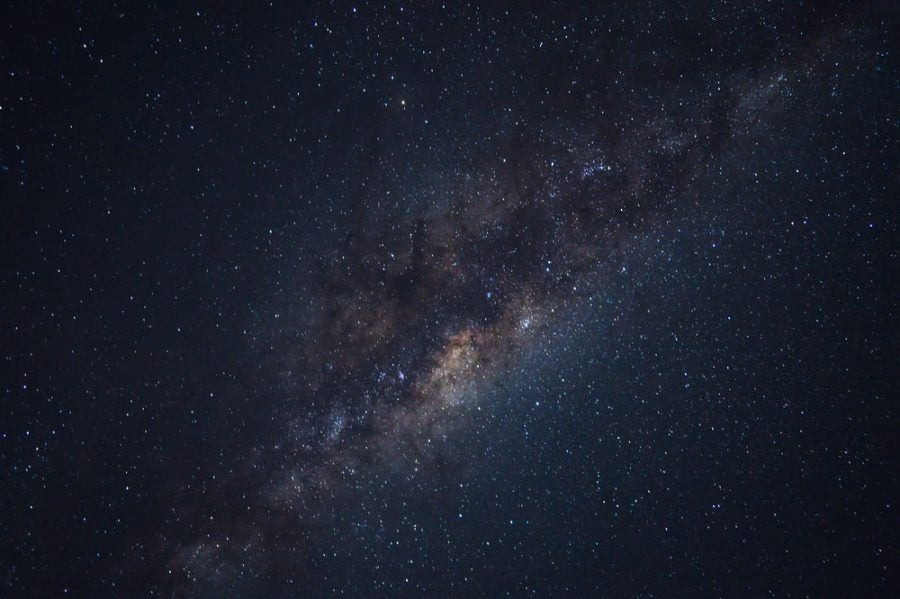The James Webb Space Telescope (JWST) is NASA’s newest premier space science observatory set to replace the aging Hubble Space Telescope. Hubble was almost NASA’s 4.7 billion dollar blunder when spherical aberration (a flaw with Hubble’s 2.4 meter mirror) caused the images to distort into a blurry mess. It’s all because the polishing degree of the primary mirror is only one-50th of that of human hair, which is too flat! Luckily, NASA scientists were able to combat this problem by installing an array of optics and instruments in the telescope during orbit. Astronauts have since visited the telescope in space four more times to perform various services to keep it running smoothly and prolong its life. However, Hubble is reaching the end of its lifespan. Soon, NASA will no longer be able to update the school bus sized telescope: that’s where Webb comes in.
The JWST is scheduled to launch from the island of French Guiana on December 24, 2021. Just like Hubble, Webb has overcome many setbacks. The telescope has been in the works since 1995 and officially started development in ‘96. It underwent a significant redesign in 2005 and by 2010 was already more than $1.4 billion over the $5.1 billion budget with the finish line still at least five years out. Today, Webb is thought to be around $10 billion. Nearly canceled by Congress, Webb’s launch date was pushed from October 2018 to the next year, and then the next, and then the next. Finally, it has a set date to take off into the great vacuum of space and travel almost one million miles to reach its destination.
JWST is undoubtedly a feat. It consists of a 6.5-meter-wide foldable, gold-coated, hexagonal mirror, a five-layer sunshield the size of a tennis court, and thousands of moving parts that must operate correctly for the telescope to function properly. This massive project will be secured in the Ariane 5 rocket — one of the most reliable launch vehicles in the world. In order to fit the delicate telescope into the rocket fairing, it must fold. The 18 different mirror segments of the primary mirror are arranged in a honeycomb pattern. This structure allows for six of those mirrors to form two wings, which will eventually fan out again in space.
Many aspects of Webb’s launch and formation are critical to its mission. For example, only two hours after launch a high-gain antenna platform will be positioned, enabling communication between NASA and the telescope. Shortly after, the telescope will utilize its thrusters to correct its course through space; this is the first of several course corrections Webb will need to make. Again, Webb will need to unfold its sunshield, golden mirror, and various other tools, and instruments, all attached for one purpose: to study our universe. In all, more than 300 single point failure objects and 50 major deployments must operate flawlessly to ensure functionality and the finest scientific observation.
Around 180 days after its launch, the origami telescope will have performed all actions and calibrations necessary to function. It will have also reached its final destination dubbed “L2” which is around one million miles away from Earth. Because this telescope will be stationed so far away, astronauts will be unable to reach the machine to update or fix the telescope. Therefore, Webb has a limited lifetime to study the universe. Scientists predict its lifespan to be around 5 to 10 years, depending on when the fuel needed to correct its position runs dry.
Webb is geared up to unveil secrets of the cosmos, provide insight into the great abyss of space, and hopefully offer answers to some of science’s greatest mysteries. How old is the universe? How fast is the universe expanding? What causes this expansion? Are there any planets like Earth that can support life?
Resources used:
Cesari, Thaddeus. “The Road to Launch and beyond for NASA’s James Webb Space Telescope.” NASA, NASA, 2 Nov. 2021, https://www.nasa.gov/feature/goddard/2021/the-road-to-launch-and-beyond-for-nasa-s-james-webb-space-telescope.
Grossman, Lisa. “The James Webb Space Telescope Faces Great Expectations and a Huge to-Do List.” Science News, 6 Oct. 2021, https://www.sciencenews.org/article/james-webb-space-telescope-launch-space-science-cosmos-exoplanets.
“Key Facts – Webb/NASA.” NASA, NASA, 2021, https://jwst.nasa.gov/content/about/faqs/facts.html.
“The Launch – Webb/NASA.” NASA, NASA, 2021, https://jwst.nasa.gov/content/about/launch.html.
Webb.nasa.gov. 2021, https://webb.nasa.gov/content/webbLaunch/assets/documents/WebbMediaKit.pdf.




